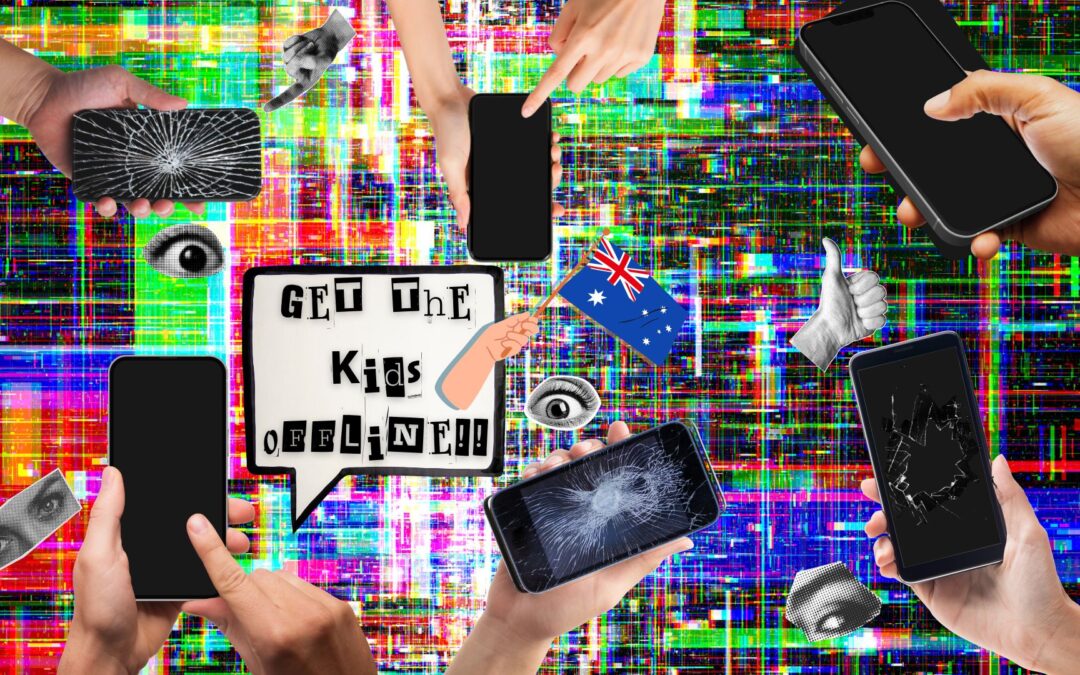In the backstreets of London, where graffiti stains the walls like urban hieroglyphs, one name echoes louder than the others: Banksy. The anonymous artist has become a cultural phenomenon, turning the illegal art of graffiti into a multimillion-pound empire. But there remains a lingering conspiracy: Is Banksy even real and if so, is he more than one man?
The idea of Banksy, a single, shadowy figure sneaking around with a stencil and spray can is compelling and you can understand why his presence through art is so widely recognised. It fits neatly into the narrative of the lone artist challenging
authority and capturing the public’s imagination. But, over the years, a variety of conspiracy theories have emerged, suggesting Banksy is not an individual at all but a collective. Let’s dive into the rabbit hole of speculation surrounding one of the art world’s greatest mysteries.
The idea of the solitary artist creating works in secret is central to the Banksy legend. His pieces often appear randomly overnight. The simplicity of his stencilled images and the poignancy of his messages have led to comparisons with Picasso, Warhol, and Duchamp. Yet, the logistics of Banksy’s art raise eyebrows and questions naturally emerge.
Lets consider the incredible scale of some of his projects: installations in Disneyland, a mural on the West Bank barrier in Palestine, or his run down “Dismaland” theme park. These aren’t the kind of projects a single individual could execute alone. They need accurate planning, funding, and a team of skilled professionals. Could Banksy just be a lone ranger or is he the figurehead of a larger operation that includes a team of those dedicated to producing Banksy’s vision.

Speaking to Laura Seward, an art historian who specialises in art analysis, contemporary street art and explores the background meanings of art said: “It’s entirely plausible for Banksy not to be just one person. Banksy’s work shows incredible logistical efficiency, and the themes vary so much that they almost suggest multiple voices.” Laura said the idea of a collective makes much more sense than on his own. She said his pieces also convey a range of emotion from happiness, anger
or sadness towards a particular topic. “Banksy is incredible in his work, but I’m not entirely convinced he can conjure up the art and themes he does on his own.”
The idea that Banksy is not a person but a collective of artists working under the same bracket, came to light after journalist Craig Williams analysed Banksy’s works and found correlations with the touring schedule of the band ‘Massive Attack’. The theory suggests that 52- year-old Robert “3D” Del Naja, a founding member of the Bristol-based band and a known graffiti artist, might be Banksy, or at least one of the people behind the name.
Del Naja denied the claims, though he did admit to being friends with Banksy. But the notion of a collective makes
sense when you consider the global reach and rapid execution of Banksy’s projects. Think about it, Banksy’s work is plastered all around the world from La, New York, Jerusalem, London and Paris. His art appears to the public overnight as if by magic, often accompanied by a social media post from his verified Instagram account.
Could this be the work of a coordinated team rather than a single, elusive artist? Or is he running a successful business on his own and has more versatility than we think?
We were lucky enough to talk to Ben Eine, one of the most successful UK street artists in the world who is regarded as a pioneer in the exploration of graffiti letterforms. Ben is a contemporary of Banksy who said: “There’s no way you could
pull off half the stuff he’s done without a team,” Eine told us. “Even tagging walls in the middle of the night would need in depth planning. You need lookouts, you would need someone to help you carry the gear, it’s not a one-man show. I know I couldn’t do it alone! I think his work is amazing, but I truly believe it’s a group effort.” For those who want to push the boundaries of reason, there is one theory that states that Banksy is a military-type operation designed purely to create and encourage conversations about the government and the society we live in.
According to this theory, his rebellious art gives people an outlet for their frustrations with capitalism, war, and inequality, all while being tacitly approved by the very systems he critiques. This may seem far-fetched, but it highlights the contrasting nature of Banksy’s mainstream acceptance. There’s no way one artist whose work challenges authority, like the government, can gain such widespread approval without ruffling more feathers? As if the Tories are smart enough to pull that off!
When the internet is at its maddest, they say that Banksy might not exist at all, at least not in the way we
think. What if the idea of Banksy is a long-running media hoax, orchestrated by journalists or art dealers? The
mystery of his identity fuels public interest, making sure Banksy remains a cultural spectacle. Just think about it,
Banksy’s art basically hands story hungry journalists an eye-catching story- quite literally. His artwork in different
locations across London for example, keeps the public engaged and excited at the prospect of a new piece of art being created overnight. In this scenario, Banksy is less of a person and more a fictional idea that people can hold on to and enjoy. So, you could say, Banksy is a construct for social media entertainment.
Part of Banksy’s attraction is the mystery surrounding his identity. In a world obsessed with celebrity and personal branding, Banksy’s anonymity is refreshing. It allows the art to take centre stage, completely detaching from the personality of Banksy. This invites people to engage with his work through a lens of appreciating the art. The question of who Banksy is, could be argued to be part of the art and fun itself.
The mystery of Banksy serves a practical purpose. Graffiti is illegal, and anonymity protects Banksy from legal repercussions and the police. He’s a walking example of how to get away with a crime, although maybe don’t try that for yourself. The mystery shields him from the kind of scrutiny that could undermine his message, or any governmental issues that may arise from his art. By remaining in the shadows, Banksy ensures that his work speaks louder than his persona, which is powerful.
After exploring numerous conspiracies of who/what Banksy could be, a TikTok theory that would only be fair to discuss is that Banksy is in fact the person he portrays himself as: a London street artist, on his own, creating art that the world seems mesmerised by. Being active since 1990’s the internet says Banksy has produced 30,000 authentic prints. Its difficult to know how many pieces of street art Banksy has produced because they usually disappear within 24 hours, however, they are so iconic that the memory and message the graffiti portray tend to stick around for a long time, e.g. rage, pulp fiction and love is in the bin. A self-proclaimed ‘Banksy professional’, who has created and formed a Facebook page that 2.1 million people
follow, told us about his thoughts on Banksy and the conspiracy that circulates him.
Alex Sirbu said: “I have made the effort to learn about Banksy for many years now. I truly believe he is one person. All his art has the same stencil-based style, and I think it would be difficult for multiple individuals to maintain such consistent visual coherence across different pieces without a slip up in style.” Alex discusses how the same messages that are delivered behind Banksy’s work suggest a singular creative mind behind the works, as collaborative groups often produce more diverse opinions. You know what they say, never discuss religion or politics! He also talked about how, for the safety of Banksy’s anonymity, there can’t be more than just Banksy involved: “adding more people would increase the risk of exposure, especially given the illegal nature of many of Banksy’s works.”
As tantalizing as the conspiracy of Banksy’s identity is, does it really matter who he is? His impactful, conversation tiggering work stands on its own. The conspiracy theories, while intriguing, may be beside the point. Banksy’s art is about challenging
the government, questioning societal norms, and inspiring dialogue.
Whether he’s a single artist, a collective, or a societal construct, the message remains the same. In a way, Banksy’s greatest trick and most unique selling point might not be his art but the myth he’s created around it.
Realistically, the mystery of Banksy is as much a part of his legacy as the works themselves. So, is Banksy real? Is he one single artist? Well, maybe the better question is: Do we even need to know?



